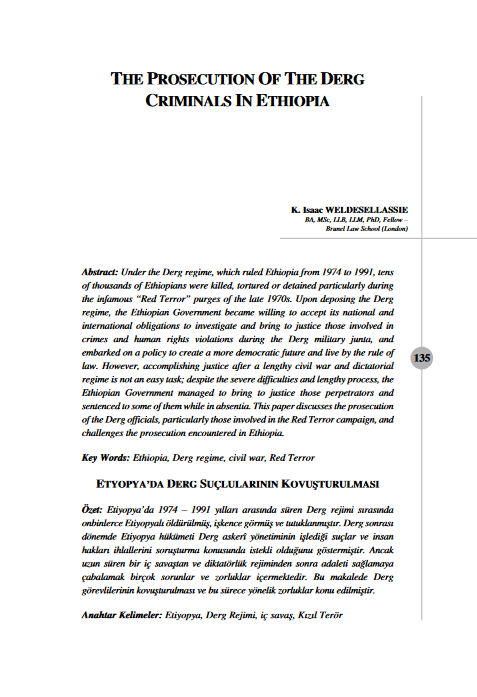BY SUNE ENGEL RASMUSSEN | PHOTOGRAPHS BY ANDREW QUILTY
Foreign Policy, SEPTEMBER 21, 2016
LASHKAR GAH, Afghanistan — Abdul Hakim seems to have just vanished. The 15-year-old boy left his madrasa across the Pakistani border to visit relatives in Afghanistan. But since crossing into Helmand province on his way to meet his parents in Bolan, a suburb of bustling shops outside the provincial capital, nobody has heard from him.
The list of evils that could have befallen Abdul Hakim on his way home is long. In late July, the Taliban launched a series of attacks in Helmand and have since gobbled up territory across Afghanistan’s beleaguered southern province. Districts that for years were safe have now been seized by militants or are being ravaged in front-line fighting. Roaring airplanes, Afghan and American, drop bombs almost every night, causing casualties that are rarely publicized.
“There is no security. Our children are being killed,” says Habibullah, an elder from Abdul Hakim’s family.
In Bolan, where Abdul Hakim’s family waits for him, the front line is only about three miles away. Worried that government forces might not be able to repel a Taliban assault on the city, the United States has hit Helmand province with about 40 airstrikes since late July and deployed more than 100 U.S. soldiers to Lashkar Gah.
Above: In a maze of residential compounds 10 miles west of Lashkar Gah, a unit of Afghan National Army (ANA) soldiers hold the front line against Taliban forces.
THE FINAL FRONT IN THE AFGHAN WAR
In the latest episode of FP’s The Backstory podcast, chief national security correspondent Dan De Luce talks with journalist Sune Rasmussen and photojournalist Andrew Quilty about reporting from Lashkar Gah in Afghanistan where the Afghan Army is losing ground to Taliban forces. Click here to listen.
Whatever they’re doing, it doesn’t seem to be working. Fighting in Helmand always ebbs and flows — but never since 2001 have the Taliban been able to surround Lashkar Gah like this. The Taliban have also almost completely captured several districts in the province that have been firmly in government hands for a decade or more.
The Taliban’s gains in Helmand mirror their progress elsewhere in the country. In the first half of 2016, the Afghan government lost control of almost 5 percent of its territory, according to the Special Inspector General for Afghanistan Reconstruction (SIGAR), a U.S. government watchdog. Its forces now control 65.6 percent of districts throughout the country — meaning they lost control of 19 districts in a few short months. Recently, the largest Afghan news channel, Tolo News, reported that insurgent attacks in Afghanistan had increased 28 percent from June to July.
But it’s Helmand that holds the greatest symbolic value for the United States. As Barack Obama wraps up his presidency, the province is coming to embody one of his greatest failures as commander in chief.
Obama sent thousands of U.S. Marines to Helmand in 2010 as part of a bid to turn around the course of America’s longest war. The surge has receded, and the bitter results are now visible. No province in Afghanistan has claimed the lives of more foreign soldiers, even though Helmand only makes up about 3 percent of the population. No province is deadlier for Afghans either: In Lashkar Gah, the Emergency Surgical Center, the province’s preeminent trauma hospital for the war-wounded, received 216 wounded patients in the past two weeks — its highest number ever. Nowhere in Afghanistan more clearly shows why Obama’s chosen strategy had little chance of ever working than Helmand.
Six families from Chah-e Anjir, forced from their homes because of fighting, now share a compound in the Bolan neighborhood of Lashkar Gah.
When I visited Chah-e Anjir one year ago, a town about six miles from Lashkar Gah, women and children still walked the streets, which were firmly under government control. Merchants sold fresh produce, dusty packets of chewing gum, and energy drinks along its single paved road studded with speed bumps. Private cars and motorcycles puttered by without much scrutiny from security forces.
Five months ago, we returned to find most storefronts shuttered because of nearby fighting. Army soldiers had turned the local school into a military base, and the streets felt ghostly, but residents still lived in their mud compounds among orchards and narrow lanes.
Today, the front line has crept even closer and now cuts right through Chah-e Anjir. All the civilians, around 300 families, have fled, some of the displaced tell us. Six of those families settled in a ramshackle house a couple of miles from the front line. That’s where we meet Black Bismillah, who received that nickname either for his dyed beard or his one black iris (the other is green).
“One morning, government forces came and told us to leave. Then they started fighting from our house,” he says. As the seven bearded men in the house spit long green globs of tobacco into a metal bucket, they tell stories of government forces fleeing checkpoints without a fight, of police looting civilian houses, and of Taliban making a show of respecting locals. In Helmand, you can run an efficient hearts-and-minds campaign merely by not abusing people.
“The government forces are thieves,” says Ghulam Mohammad, 55, who accuses police of stealing his sheep and turkeys. “At the moment, the Taliban treat us well, but I don’t know about the future.”
We are visiting Chah-e Anjir in August, a week after the Taliban seized parts of the village. We call ahead to let the Afghan National Army commander of the local base know that when we hurtle toward his troops in a swirl of dust, this is one white Toyota Corolla they don’t need to shoot at. We stay off the main road to avoid mines and drive along a stretch of gravel between mud compounds.
We arrive at a paved road in the village and are quickly bundled into a Humvee by Afghan soldiers. It’s an upgrade from our Corolla and better than what most regular troops drive. But Humvees are mostly helpful for traversing difficult terrain; they offer little protection from improvised explosive devices (IEDs). By the side of the road, we see the aftermath of an attack by the Taliban’s preferred tool of destruction: A charred hulk of metal is all that’s left of another Humvee after an IED killed all six of its Afghan National Army passengers. It is in this same area, a week later, that another roadside bomb will kill U.S. Staff Sgt. Matthew Thompson.
We turn into a compound where a young Afghan soldier with a Rambo headband in the tricolor of the Afghan flag welcomes us. A little less than a week ago, 44 Afghan special forces were sent here from Camp Shorabak, previously known as Camp Bastion, the main base in Helmand, to link up with a unit of about 50 Afghan National Army soldiers guarding the compound.
Special forces commander Rohid Paykar rests after fending off a Taliban attack on the Chah-e Anjir front line.
Paykar’s 14 men and 30 commandos, who were supporting ANA forces, said they were being attacked up to three times a day by Taliban forces.
During the fighting, one ANA soldier (pictured here) was wounded, his neck grazed by a bullet. Afghan forces claimed to have killed three Taliban fighters during the shootout.
We find special forces commander Rohid Paykar, a chain-smoking first lieutenant with boyish good looks, relaxing in the shade with his men.
There are gun battles three times a day, he says, and the Taliban number about 200 in total in Chah-e Anjir — far from an insurmountable challenge for a well-trained unit like his. But even if Paykar’s men are able to advance further, they do not have enough men to hold on to any new ground. Reinforcements have not yet arrived when we visit and neither have U.S. “advisors,” who are not meant to engage in combat unless in self-defense. In offensive operations, Paykar’s men are on their own.
“The soldiers don’t have night vision. They can’t stand outside for even one minute at night,” he says. “If I leave this place, you see, the army and the police will flee. One hundred percent.”
He would say that, of course — he’s a 25-year-old smartass. But a minute later, the base is hit with incoming fire, and we see how the soldiers react in battle. Paykar directs his men to fight from three corners of the base. One mans a radio. A commando fires grenades from a little orchard inside the compound, and another climbs a rickety ladder to aim an M4 carbine over the edge.
THE PROBLEM, OF COURSE, IS THAT PAYKAR AND HIS MEN ARE SENT HERE AS TEMPORARY BACKUP. THE TALIBAN LIVE NEXT DOOR.
Some of the Afghan special forces have only three months more training than regular soldiers, but the difference is stark. The army soldiers immediately retreat to an enclosed passageway and fire at random toward the top of the compound walls. It’s a Hail Mary shootout, with bullets depleting fast. One of the soldiers gets hit through a sniper hole. In a stroke of inconceivably good luck, the bullet only grazes his neck, and he is patched up in a few minutes, though looking shocked.
After the battle, Paykar reclines in an open window, smoking cigarettes with his men. I ask them how the Taliban can still be so strong. “They are not strong,” he says, mock-offended. “Who says they are strong?”
The problem, of course, is that Paykar and his men are sent here as temporary backup. The Taliban live next door.
As we leave, the gunner on top of the Humvee unleashes a rain of bullets behind us, presumably to keep the Taliban from firing at us. Inside the vehicle, the sound of bullet casings clattering on the Humvee floor vies with the voice of Pakistani singer Gul Panra blasting from the stereo.
The mood is jubilant. We killed three Taliban, the soldiers say triumphantly. How they counted while inside the compound is unclear. But this method of guesstimating helps explain how Afghan officials have counted Taliban casualties: They said 725 Taliban had been killed and injured, while government forces have lost 25 men in the first two weeks of August. Since then, the army and the Governor's office have not responded to requests for updated casualty tolls. The true numbers are anyone’s guess.
Mistrust of the government runs deep here, and spin only further alienates locals who can see militants, outnumbered by about three to one, gain territory. For instance, Afghan officials, such as the spokesman of the Defense Ministry, insist that only four of Helmand’s districts are under Taliban control. To locals who have had to flee, such claims are ludicrous. The reality in most of Helmand is that while government officials occupy two or three administrative buildings, in the rest of the district the Taliban roam free.
Rahmatullah Amiri, a Kabul-based researcher who follows the situation in Helmand closely, illustrates the territorial grip of the Taliban with a story. He has asked Taliban sources why they are so intent on taking Lashkar Gah, even though it has limited strategic value. They reply: “Where else is left?”
Omar Shah, 24, recovers in the Emergency Surgical Center in Lashkar Gah; he lost both his legs and several fingers after an IED detonated while he was standing guard in Marjah.
Helmandis often ask how the Taliban, vastly outnumbered, could seize previously peaceful districts in a matter of days. Part of the answer is the corruption, largely fueled by money from the United States and other Western donors.
A Sept. 14 report by SIGAR, the U.S. government watchdog for Afghan reconstruction, revealed that the United States has worked against its own interest in Afghanistan from the very beginning of the war, by feeding government corruption with one hand and fighting the Taliban with the other.
“Corruption undermined the U.S. mission in Afghanistan by fueling grievances against the Afghan government and channeling material support to the insurgency,” the report reads. “The United States contributed to the growth of corruption by injecting tens of billions of dollars into the Afghan economy, using flawed oversight and contracting practices, and partnering with malign powerbrokers.”
More than $100 billion in aid has poured into Afghanistan from the United States alone. As a result, top positions in the security forces are attractive simply because they provide a path to personal enrichment.
An Afghan government investigation has shown that up to 40 percent of troops in Helmand don’t actually exist but are kept on lists to allow commanders to siphon off their salaries.
"THAT'S HOW THE TALIBAN ADVANCED. THERE WAS NOTHING STOPPING THEM."
These “ghost troops” don’t just drain budgets. They also put soldiers at risk. At the Italian-run Emergency Surgical Center in Lashkar Gah, we meet Omar Shah, who until three weeks ago was fighting with the police. He had previously been an army soldier fighting in the eastern province of Paktia, where, he says, “the Taliban never fired at us.”
But in Helmand, the Taliban are close. So close they were able to plant an IED nearby the vehicle Shah was tasked with watching. When it detonated, he lost both his legs, at the age of 24. That was three weeks ago. He puts on a brave face for someone whose future as a breadwinning husband and father disappeared in a flash. “Our commander said we were 400 police,” he says, with more than a touch of resentment. “In reality, we were 120.”
The responsibility for combating corruption lies with Hayatullah Hayat, who was named the governor of Helmand in April, the third man in a year to take up that position.
Hayat admits that his authority does not extend as far as his mandate. Particularly in Helmand, government forces can be impenetrable to an outsider trying to clean them up. Hayat says police commanders bring hundreds of loyalists — primarily fellow tribesmen — with them into their units, making cleaning up the force without collapsing it almost impossible.
“The reality is that the police here is not 100 percent national police,” Hayat says. Recently, he fired the police chief of Garmsir, who was suspected of involvement in the drug business. His brother is a senator and staged large protests in Kabul and Helmand against the dismissal, destabilizing an already volatile situation. “When it comes to law enforcement, it’s very difficult to control them.”
The result of such machinations is that officers have been granted virtual impunity to abuse their power. Helmand is rife with stories of government forces, especially the police, abusing locals so much that people seem willing to support whichever side, government or Taliban, will leave them alone.
“People are tired of fighting. They just want one side to be in control,” says Amiri, the researcher. He visited Musa Qala in northern Helmand, which government forces surrendered to the Taliban in February. Since then, he says, shops in the bazaar that were previously shut have opened back up. The police used to harass shopkeepers, and some were known to keep young boys as sex slaves — in a practice known locally as bacha bazi, or “boy play” — at their bases.
When government forces withdrew, violence abated. The Taliban let people live in peace, as long as they obeyed the group’s strict Islamic rules.
Friends and relatives of a police commander killed in Garmsir district stand with his body after it had been prepared for burial at the provincial hospital in Lashkar Gah.
The vehicle pictured here was badly damaged after it came under attack while transporting the police commander’s body from Garmsir to Lashkar Gah.
Recently, when he visited, Musa Qala was “crazily busy,” Amiri says. “Under the government, it was a ghost town.”
The governor dismisses the idea that Helmandis would prefer life under the Taliban, but he admits the recent Taliban advances have come as a surprise.
“I’m concerned about the sudden fall of Nad Ali, Garmsir, Nawa,” he says, ticking off the names of districts a stone’s throw from Lashkar Gah. “It’s a concern — there’s no doubt. We’re working to find out what happened.”
One thing that happened was that government forces ran for their lives. The retreat shows that the Taliban’s greatest advantage in Helmand is the low morale of their opponents. Police and army units have been manning the front line in Helmand for months without a break.
When government forces abandoned the northern districts of Musa Qala and Nawzad in February, the United States termed it a “tactical decision,” and the retreat occurred in a planned, orderly fashion. Lately, however, when soldiers and police have deserted their posts, the withdrawal has been panicked — leaving residents, and sometimes fellow troops, behind.
One early evening, I find a gathering of people at the backdoor of the Emergency Surgical Center. A piercing smell of soap fills the street. On the other side of the wall, hospital personnel are washing the body of Ghous Mohammad, a police commander who was killed in the Taliban assault on Garmsir.
Leading up to the assault, police officers tell me, Mohammad had gone with three men to a nearby military base. His superior, the police chief, was supposed to support the soldiers in the event of a Taliban assault — but when Mohammad left, the police chief fled with his entire unit, says Abdul Zaher, a policeman who survived the attack. When the Taliban attacked, the soldiers were left to fend for themselves. Up to 25 soldiers, plus Mohammad and his three men, were killed, Zaher says.
“All these people were killed because of him,” he says of the police chief. “If I see him again, I will eat him.”
The governor admits that authorities have captured 27 troops who fled from Garmsir. “We are trying to find where their leaders are. They should give us good reasons why they left their posts,” Hayat says.
“I saw with my own eyes government forces leave checkpoints,” Ghulam Mohammad, one of the family members displaced from Chah-e Anjir, says. “I don’t think the government can push the Taliban back. They don’t fight.… We see the Americans supporting the government forces when they are trying to retake checkpoints, but then it’s too late.”
Amiri partly blames poor leadership for the low morale.
“For seven or eight months, the forces weren’t replaced or got leave,” he says. When the exhausted forces were finally surrounded, they fled into the district center of Nad Ali, where they are still cooped up. He continues: “That’s how the Taliban advanced. There was nothing stopping them.”
Women displaced from Helmand’s districts wait in line for the provincial governor, Hayatullah Hayat, to hand out envelopes with cash.
Civilians in Helmand who support the government almost unanimously agree that the withdrawal of American and British combat troops in late 2014 came too soon. Many want the United States to assume a stronger role in Helmand.
Others blame the United States for inviting the arrival of Islamist militants in a province where violence had traditionally mainly emanated from long-standing tribal rivalries.
“Of course, if America drops bombs, they create more Taliban,” says Rahmatullah, 40, from Bolan. “Sometimes, even if there is only one Taliban in a village, they will bomb it and kill civilians.… What do they want from us? They should leave us alone.”
“I’M SURPRISED THEY HAVEN’T TAKEN LASHKAR GAH YET. IT’S NOT THE TROOPS HOLDING ON TO LASHKAR GAH. IT’S THE GEOGRAPHY.”
Civilians don’t give the Taliban a free pass either. We also hear stories of the militants’ brutality. When the Taliban seized the government-friendly Nawa district on the edge of Lashkar Gah, hundreds of families fled. Among them was Ghulam Khan, a 52-year-old principal of the local high school. A few days after the Taliban takeover, he decided to return to his village with his son. Late the same evening, two Taliban fighters knocked on his front door. The son opened it and was asked to fetch his father. When Khan came to the door, the militants took him outside. According to his nephew, Wali Mohammad, the Taliban then executed Khan with shots to the heart and head. A possible motive for his killing could be that he was a government employee, though family members insist they have no clue why he was targeted.
As the Taliban have advanced, the violence has shattered families. One afternoon, in front of the governor’s compound, close to a hundred women in blue burqas have lined up to wait for a handout of 1,000 afghanis ($15) reserved for widows. Most are from Nawa. One woman, Zakera, says this is the first time since the foreigners came to Helmand in 2001 that the Taliban have been in her area.
Crying incessantly, she tells me about her son, a policeman in Khanashin. “When the Taliban attacked, he disappeared,” she says. “He was my only son, and he supported the family.”
A mile from here, hundreds of people have lined up outside a yard where the Afghan Red Crescent Society is preparing a food distribution to displaced families. About 3,000 have been displaced in two weeks, says the president of the charity’s Helmand branch, Asadullah Mayar. However helpful, there is something innately humiliating about the situation. An armed guard juts out his rifle butt at two young guys to make them back off. Once inside, the displaced line up again, as the distribution slowly begins. For 10 minutes, the Red Crescent president and smiling volunteers pose for phone photos with every individual beneficiary, before calling on the next one.
A policeman disperses a crowd of displaced Helmandis waiting for Afghan Red Crescent Society volunteers to distribute aid packages in Lashkar Gah.
A crowd waits for food and supplies to be distributed. Roughly 3,000 families have been displaced from several districts by the past two weeks of fighting. A thousand of those families are now in Lashkar Gah.
At the end of the line, I spot Black Bismillah, whom we met on our first day. He is not having any of it. He has a family to feed. He steps forward, lays a woolen shawl out on the ground, packs up the food, and walks out.
Some worry that the Taliban may be able to repeat in Helmand what they did last year in the northern city of Kunduz, which they captured for two weeks. However, Kunduz is not Lashkar Gah.
“There is no chance Lashkar Gah will fall to the Taliban,” says Hayat, the Helmand governor. “There is no doubt that many Taliban are from this area, the leadership and others, but if you go to farmers and people living here, they are supporting the government.”
Kunduz is a patchwork of ethnicities, and anti-government sentiment had been brewing for years, making it possible for the Taliban to infiltrate the city. In Lashkar Gah, the vast majority is Pashtun, and the tribes that control most of Lashkar Gah are predominantly against the Taliban.
Amiri, however, disagrees that the city is unassailable by the Taliban. “I’m surprised they haven’t taken Lashkar Gah yet,” he says. “It’s not the troops holding on to Lashkar Gah. It’s the geography.”
The provincial capital is hedged in by a river and surrounded by desert, making it easy to defend. Yet Amiri fears that the Taliban may grow strong enough to take it by sheer force, without infiltrating it. And once they do, they will be difficult to oust.
“Kunduz is multitribal, which made the city vulnerable to infiltration, but also possible to take back,” he says. “If [Lashkar Gah] falls, it will be a solid base for the Taliban.”
Either way, many expect the Taliban to launch an assault on the city this fall. A Western intelligence source says the recent lull in fighting is not due to government forces resisting, but because the Taliban are moving reinforcements from Helmand’s northern districts down to Nad Ali and other districts close to Lashkar Gah in preparation for a bigger offensive.
Friends and relatives of Abdul Hakim, a teenage boy, carry his body from a vehicle in a cemetery in Bolan, on the outskirts of Lashkar Gah. Hakim was killed by gunfire on the Kandahar Highway between Gereshk and Lashkar Gah; the road has become a focus of the heavy fighting between Taliban and government forces.
Shortly after the break of dawn, the metallic clangs of pickaxes against hard ground echo across the arid landscape. A man digs a shovel into the gravel and tips it over the edge of a hole. They have found Abdul Hakim, the young boy.
A week after Abdul Hakim disappeared, his father got a phone call from the police. They finally told him what happened: The 15-year-old had decided to travel from Gereshk to Lashkar Gah on the same day fighting broke out on the highway. Riding a motorcycle, he was hit by a bullet somewhere along the road and taken to the Emergency Surgical Center. It took a week for the authorities to find his family. The next day, relatives and neighbors are digging his grave.
The arbitrariness of Abdul Hakim’s death is symptomatic of a conflict that kills and injures more civilians than ever. Nobody seems to know if the bullet that hit him was a stray or who fired it. The men digging the grave don’t debate those finer details. As the sun rises and temperatures climb, the beards of the older men turn white and crusty with dust. A powder of dirt settles on the young men’s glittering skullcaps, as they take turns with the axes and shovels.
“We don’t know what will happen. We just pray to God that the fighting doesn’t spread to Lashkar Gah,” says Habibullah, the elder. “We are just locals. We don’t know much.”
Friends and relatives of Abdul Hakim dig his grave in Bolan, on the outskirts of Lashkar Gah.
The father of Abdul Hakim squats by his son’s body before burial.
Around 9 a.m., Abdul Hakim’s body arrives on the back of a pickup truck, wrapped in a blanket. It is then placed on the ground for people to pay their respects. The boy’s father squats beside the corpse with his head bowed, stroking his son’s face.
“This innocent boy was martyred,” a turban-clad mullah cries to the assembled group spread out in a circle around him. “Sometimes God tests us. Sometimes we are faced with a situation like this where someone from our family is killed. No matter if we are poor or rich, we should rise to this test.”
After the prayer, the cleric comes over and motions us to leave. The family is very emotional, he says, everyone has noticed us, and even if the gravediggers welcomed us, a large crowd may take their anger out on a couple of foreigners. We thank them all and depart, leaving the bereft mourners alone to grieve. ♦
No comments yet.
-
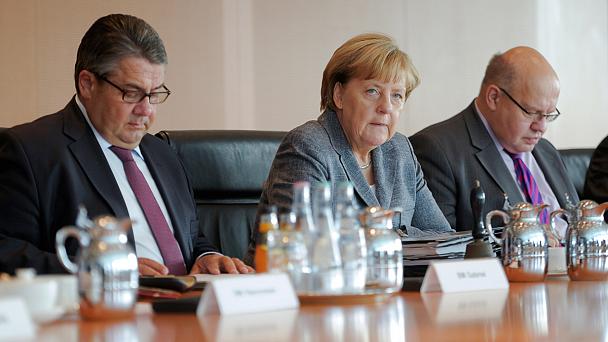 GERMAN ECONOMIC GROWTH TO SLOW SAYS FINANCE MINISTRY
Europe - EU
23.09.2016
GERMAN ECONOMIC GROWTH TO SLOW SAYS FINANCE MINISTRY
Europe - EU
23.09.2016
- WHY IRAQ’S OIL PRODUCTION HAS REACHED IT LIMITS Iraq 23.09.2016
-
 FROM RUSSIA WITH TRUMP: A POLITICAL CONFLICT ZONE
Asia - Pacific
23.09.2016
FROM RUSSIA WITH TRUMP: A POLITICAL CONFLICT ZONE
Asia - Pacific
23.09.2016
- MEET THE MAN WHO BROUGHT AN ENTIRE ENGLISH LIBRARY TO TAJIKISTAN Asia - Pacific 23.09.2016
- IMF STATEMENT ON IRAQ Iraq 23.09.2016
-
25.01.2016
THE ARMENIAN QUESTION - BASIC KNOWLEDGE AND DOCUMENTATION -
12.06.2024
THE TRUTH WILL OUT -
27.03.2023
RADİKAL ERMENİ UNSURLARCA GERÇEKLEŞTİRİLEN MEZALİMLER VE VANDALİZM -
17.03.2023
PATRIOTISM PERVERTED -
23.02.2023
MEN ARE LIKE THAT -
03.02.2023
BAKÜ-TİFLİS-CEYHAN BORU HATTININ YAŞANAN TARİHİ -
16.12.2022
INTERNATIONAL SCHOLARS ON THE EVENTS OF 1915 -
07.12.2022
FAKE PHOTOS AND THE ARMENIAN PROPAGANDA -
07.12.2022
ERMENİ PROPAGANDASI VE SAHTE RESİMLER -
01.01.2022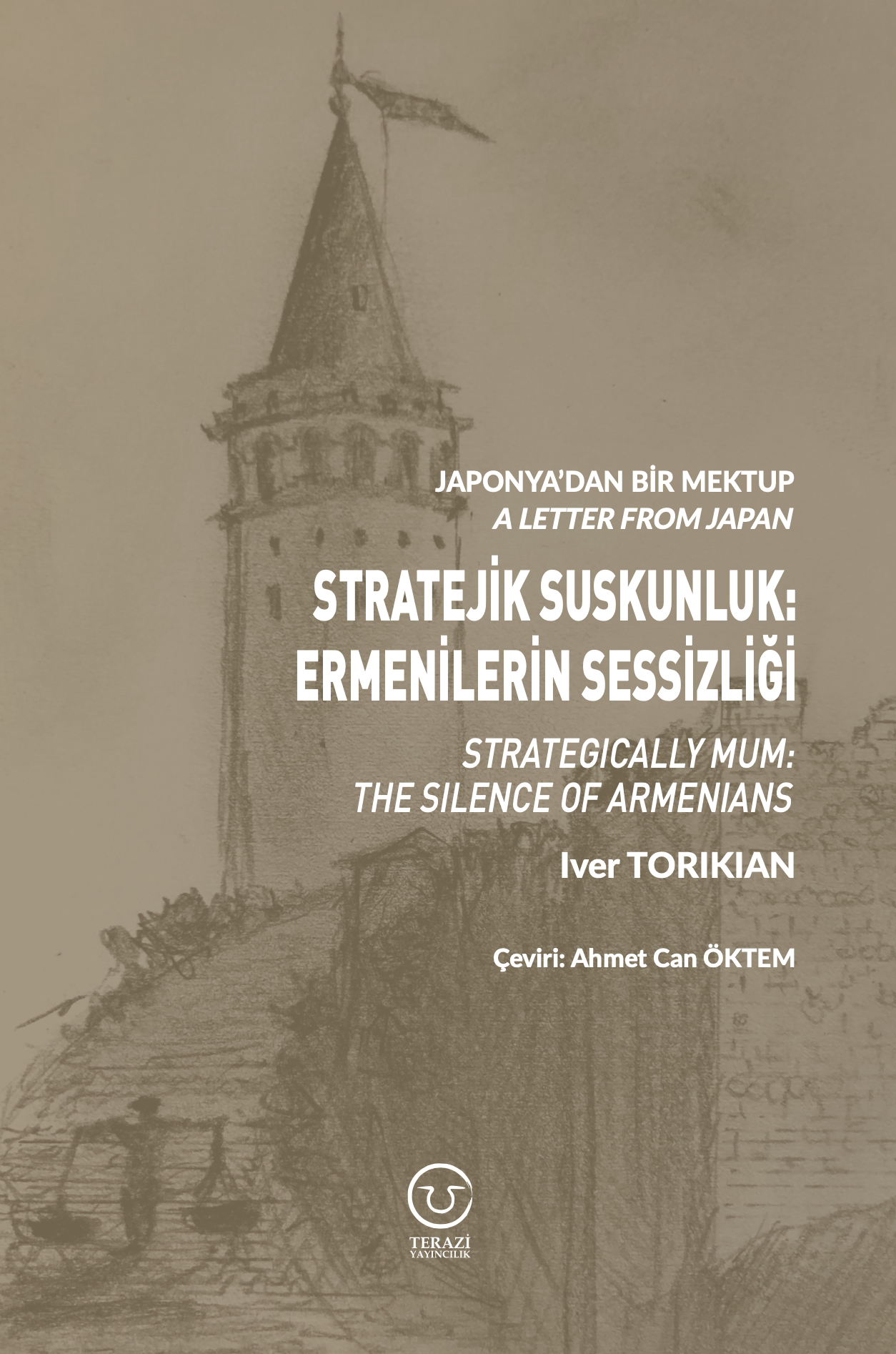
A Letter From Japan - Strategically Mum: The Silence of the Armenians -
01.01.2022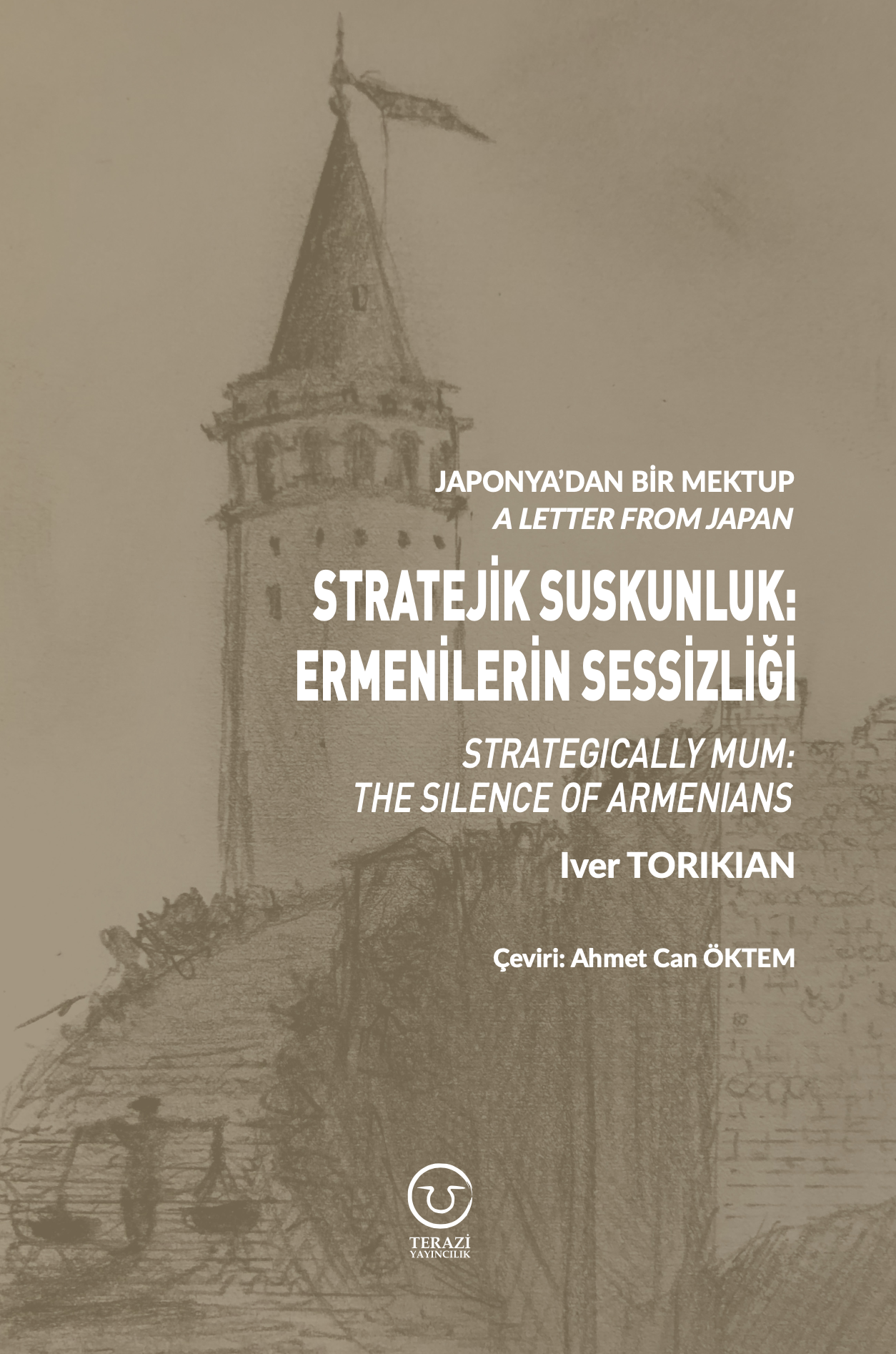
Japonya'dan Bir Mektup - Stratejik Suskunluk: Ermenilerin Sessizliği -
03.06.2020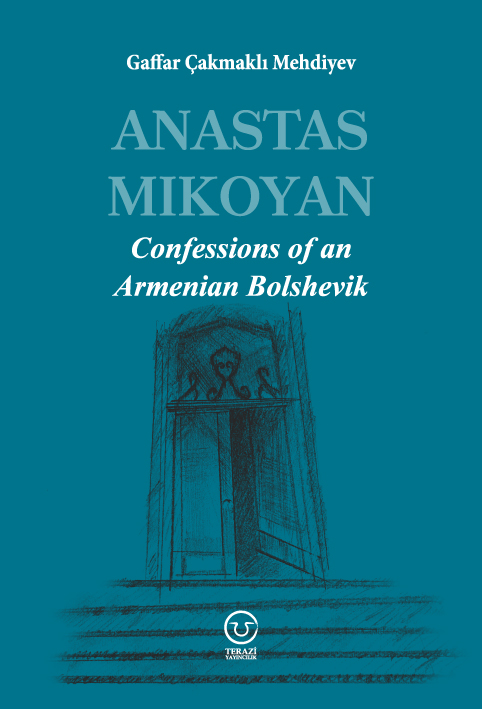
Anastas Mikoyan: Confessions of an Armenian Bolshevik -
08.04.2020
Sovyet Sonrası Ukrayna’da Devlet, Toplum ve Siyaset - Değişen Dinamikler, Dönüşen Kimlikler -
12.06.2018
Ermeni Sorunuyla İlgili İngiliz Belgeleri (1912-1923) - British Documents on Armenian Question (1912-1923) -
02.12.2016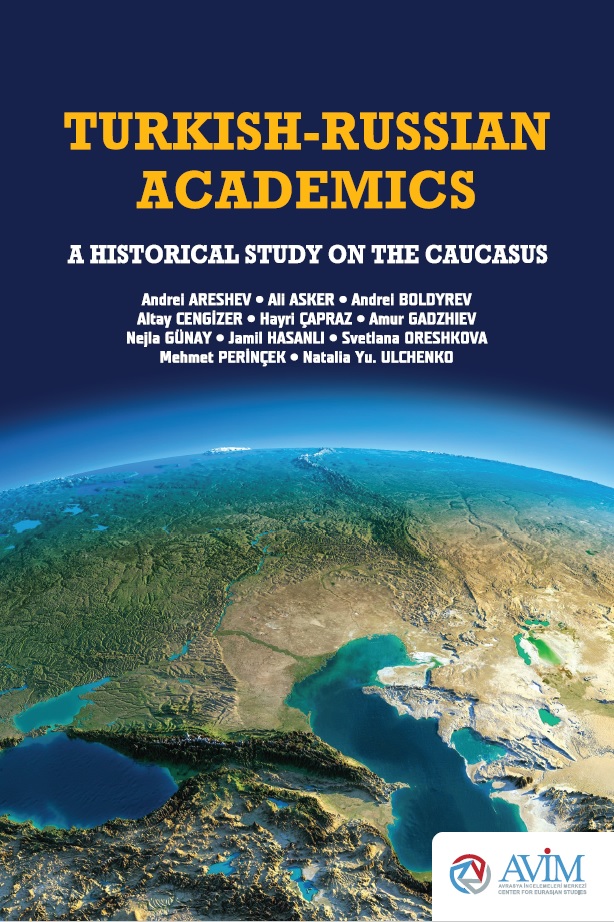
Turkish-Russian Academics: A Historical Study on the Caucasus -
01.07.2016
Gürcistan'daki Müslüman Topluluklar: Azınlık Hakları, Kimlik, Siyaset -
10.03.2016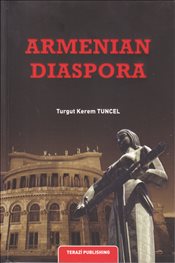
Armenian Diaspora: Diaspora, State and the Imagination of the Republic of Armenia -
24.01.2016
ERMENİ SORUNU - TEMEL BİLGİ VE BELGELER (2. BASKI)
-
AVİM Conference Hall 24.01.2023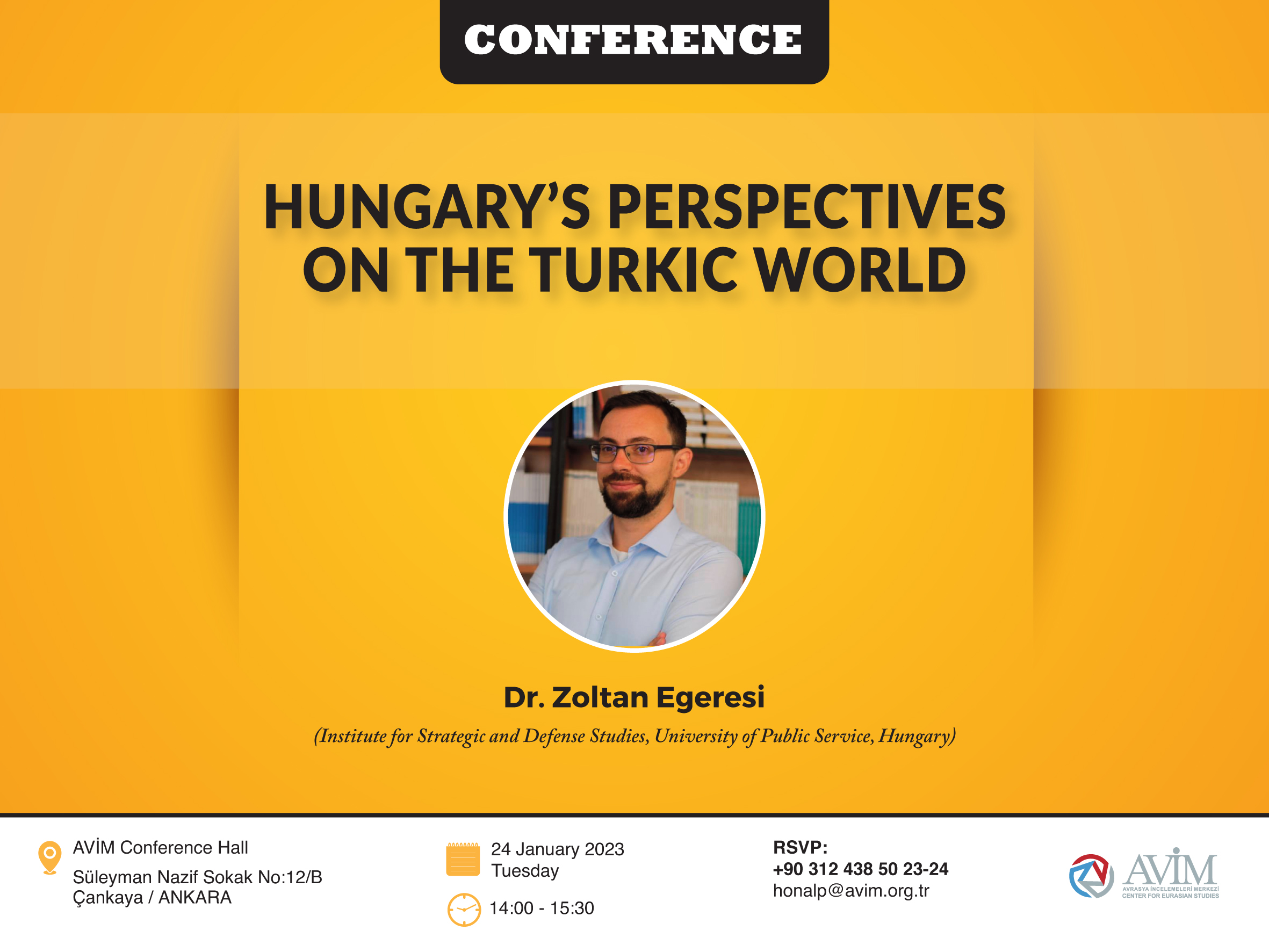
CONFERENCE TITLED “HUNGARY’S PERSPECTIVES ON THE TURKIC WORLD"








